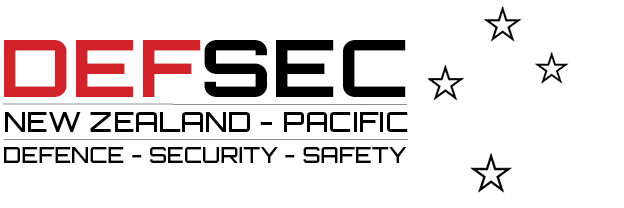
In the air, space and cyber domains, success will come to those who have a relative mastery of technologies supporting autonomy, AI and cyber security, writes Dr Andrew Dowse AO, Air Vice-Marshal (retd), Director, Defence Research and Engagement at Edith Cowan University.
Military doctrine considers modern warfare in terms of five domains. Of these, three are relative newcomers: air is little more than a century old; whereas the fourth, space, and the fifth, cyber, are even newer.
Our ability to utilise each of these three new domains has been facilitated through the development of technology. Aircraft, rockets and the convergence of information and communications technologies has allowed humankind to utilise these respective environments. As capabilities within these domains have matured, they have demonstrated their potential to contribute decisively to military success.
The source of great advantage for one nation is therefore a centre of gravity to a potential adversary. In each of the three domains, there is such a focus on counter-capabilities that the future ability to operate within them is in significant danger.
The air domain
Since its introduction in the First World War, air power’s early beginnings in observation evolved to a domain in which air superiority translated to control over the other domains. This led to a technology race to develop the best aircraft platforms to achieve air superiority, with the race being dominated by efforts in speed and manoeuvrability.
With the development of the jet engine, we saw incremental improvements in air power technologies, chronicled in the classification of generations of fighter aircraft. In the fourth and fifth of these generations of fighters, we have seen a step change in the air domain.
The combination of several technologies has changed the modern air combat capability and arguably the nature of modern warfare as we entered the 21st Century. Fifth generation aircraft combine technologies to maximise their lethality and survivability.
Sensors and precision munitions are so capable that threats can be detected and defeated at beyond visual ranges. Stealth characteristics maximise survivability, and communications systems allow threats to be engaged effectively by a networked force. The previous focus on speed and manoeuvrability of air power has become less relevant in the quest for air superiority.
Arguably, US F-35 and F-22 aircraft are more capable than aircraft such as the J20 and Su57, which might temporarily comfort the US and its allies. However, nations will continue to develop their capabilities to be more competitive.
The current and future challenges in the air domain can be viewed from two perspectives – one of symmetry and one of asymmetry.
From a perspective of symmetry, many nations are developing fifth and even sixth generation fighter aircraft, although the desire to achieve a competitive advantage means that detail about programs is strongly protected. Therefore, it is difficult to know how good developmental capabilities will be and how much is hype. For future generations of fighters, the technologies will build upon those for the fifth generation, as well as enhancing artificial intelligence, autonomy and cyber security.
Other military forces have capabilities that, whilst a minor concern for US fifth generation fighters, could pose a significant threat to other assets. Fourth generation fighters and high value elements such as air-to-air refuelling and airborne early warning and control will need to be situated well back from sophisticated threats. Hence, while fifth generation aircraft can maintain freedom of manoeuvre, other forces will be unable to deal with a strategy of anti-access and area denial (A2AD).
More importantly, from 2030, systems currently in development may challenge the superiority of Western fighters. With air combat being a battle between lethality and survivability, we will find that lethality starts to win out. The development of variety within sensors and use of networked multi-sensor capabilities will exceed the variety possible within an aircraft’s stealth characteristics. It will become more difficult to break an adversary’s kill chain.
What we will see into the future is that, far from being a counter to an A2AD strategy, the ongoing development of fighter and other weapon technologies will reinforce the ability to deny an area through the use of comprehensive sensing, networking of the force and long-range weapons. Hence, in 2014, the US announced its Third Offset Strategy to develop the ability to project force into such a highly contested environment, essentially with a focus on the ability to eliminate threat systems.
In order to maintain capability advantage from 2030, priority needs to be given now to research and development of associated technologies. These include ISR, counter-ISR, artificial intelligence, autonomy, hypersonic weapons, cyber security and the delivery of non-kinetic effects.
One such program is Boeing Defence Australia’s Loyal Wingman, augmenting the fifth-generation fighter force with unmanned combat air vehicles. These aircraft could operate further forward than manned platforms as part of an integrated force. Such capabilities could herald the start of an autonomy era in the Royal Australian Air Force and confirm the F-35 as its last manned fighter.
From the asymmetric perspective, the use of weaponised drones has become a significant security concern. The barriers to entry for these systems based upon commercially available and largely unregulated technologies are low and present an opportunity to attack ground, surface and even air targets.
As drones are increasingly used for private and commercial purposes, it will be increasingly difficult to prepare for and defeat such attacks. Even inadvertent use of drones is a security threat, as we have seen at airports and during aerial fire-fighting.
Currently, the typical option for dealing with a drone in a restricted area is to observe and attempt to identify the operator. There are systems that have been developed to deal more forcefully with drones, where allowable, such as jamming the operator signal, lasering, kinetic kill, capture and hacking.
Most nations are still deliberating, far too late, on regulatory mechanisms to register and control commercial drone usage. A regulatory approach is needed that allows drones not only to be identified but to be disabled by an authority when being misused.
Interestingly cheap autonomous air vehicles represent not only an emerging asymmetric threat, but also a potential solution to the future contested military environment. In the case of the latter, conceptually a large volume of low cost networked unmanned air vehicles may confuse an adversary’s defence systems and represent a challenge to eliminate, especially if the attacking force comprises a networked mix of low cost as well as highly capable systems with similar signatures.
It is therefore prudent to consider such a situation from the defensive perspective and the prospect of a nation state launching such an attack of UAVs, or mixed UAV and conventional forces, against us. Military planners must consider the air defence capabilities that we would need in the future to discern and deal with air targets, considered not only from an operational perspective, but also from an economic perspective.
For example, can we afford to expend $4m AMRAAMs on $500k UAVs? Conversely, if we don’t know the threat, can we afford not to do so?
The space domain
Modern military forces rely on the fourth domain, space, for the provision of communications, intelligence and surveillance, and Precision Navigation and Timing (PNT) services. Indeed, large parts of our society rely on space for similar services.
The 2011 US National Security Space Strategy characterised the space environment as congested, contested and competitive. One factor behind this characterisation is the limited resource of radiofrequency (RF) spectrum.
Increasing demand for more bandwidth by more people from more providers creates a dilemma, given the finite capacity of the RF spectrum. Technology breakthroughs, such as high throughput satellite communications, provide increases in capacity, but it’s not enough to satisfy the demand. Low Earth Orbit satellites have taken some of the pressure from geostationary orbit allocations, although there are growing concerns with interference and with the growing traffic in space.
According to the European Space Agency, as at January there were 5,000 craft in orbit around the earth, 1,950 of which are still functioning. More concerning is the amount of space debris – in excess of 22,000 in space surveillance network catalogues, but more than another 900,000 debris objects in excess of 1cm.
Enjoying this article? Consider a subscription to the print edition of Line of Defence Magazine.
There have been eight significant collisions in space, which means that we can’t dismiss the risk by subscribing to Big Sky theory. Moreover, a cascade of collisions, known as the Kessler syndrome, could affect not only the current but also future use of space.
This syndrome can be mitigated through responsible mission disposal and debris removal, as well as through active collision avoidance.
The current approach to collision avoidance needs to be transformed and resourced and given authority over space operations in a similar way to air traffic control. Space traffic control is far more difficult than air traffic control given the:
- relative speeds of objects,
- difficulty in assessing conjunctions,
- risks associated with debris,
- costs compared to low level of funding, and
- difficulty in achieving international agreement.
If the risk of collision is not enough, there is the potential also for space to be a contested environment. With the post-Cold War focus of operations having been on unsophisticated adversaries, it has been easy to presume continuity of space services. Many people also read too much into the Outer Space Treaty restricting military operations in space.
Modern militaries obtain immense value from space systems, to the extent that elements may be rendered ineffective if their services are not available. Hence, space capabilities are potential targets for adversaries.
Nations around the world are developing anti-space capabilities, as the early 2019 Indian ASAT test demonstrated. If such nations are willing to tolerate criticism by demonstrating such capabilities in peacetime, then we should have no doubt that these weapons will be used in conflict. Non-kinetic attacks on space systems are even more likely and are within the reach of many state and potentially non-state actors.
Australia and other nations are examining options for the next generation of space capabilities to achieve resilience in communications, earth observation and PNT. Considerations will include a mix of hardening systems, developing redundancies and distributing capabilities across multiple assets, including entangling with other nations. Continuing and expanding ‘Day Without Space’ components of training and exercises is critical.
Given the aggregated risks of military action and of cascaded collisions, arguably the best alternative to a space system may not be another space system. Technology development in aerospace, autonomy, energy and electronics is leading to persistent high-altitude unmanned vehicles, or pseudo-satellites, being a strong consideration as an alternative or complementary capability.
The cyber domain
For around 10 years there has been broad agreement that the cyber environment not only supports warfighting in the other domains but is a domain in its own right in which battles are waged.
In modern warfighting and indeed modern society, the fifth domain is pervasive, increasingly pivotal to activities in every domain. This cyber reach has implications in the virtual and physical, with blurriness between military and civilian, between nation state and non-nation state, and between conflict and peace.
Modern military systems are heavily reliant on information technologies. Defence forces rely on these technologies to achieve a capability edge, however that edge is only relevant if confidentiality, integrity and availability are assured.
Defence forces need to move on from the old ways of thinking in the cyber domain. In relative peacetime, our focus has been on protecting confidentiality, and we tend to only be concerned with the availability of systems in conflict. However, within a cyber-attack chain, exploits to gain access to military systems could be used for espionage or as a residual agent that can be enacted at a later time.
Similarly, with the complexity of modern connectivity, traditional perimeter defence approaches to IT security are not enough. Continual monitoring and analysis across the environment are needed. Without increased investment and vigilance, military forces are at risk of what the head of the Australian Department of Defence’s Information Warfare Division describes as being “taken out of the fight before it even starts.”
The military is just one element of national power. Mike Pezzullo, the Secretary of Australia’s Department of Home Affairs, identifies one of the seven key national security challenges as cyber-attack against critical infrastructure.
Preparedness for such an attack is hampered by a broad culture in which devices are willingly integrated into networks without considering exposure to harm. Additionally, many in our society are entirely reactive to cyber-attacks, including big business and Government, thinking that there are minimal risks and then, when it happens, expecting someone else to do something about it.
Pezzullo points out that there is no Leviathan function to maintaining public order in the cyber world. Other than for ‘serious’ attacks, such as on critical infrastructure, in most countries there is no great likelihood of an effective response. This lack of action emboldens attackers, whether they be nation states, organised crime or individuals.
Without attribution, there isn’t even clarity as to who should do something about it. Inadequate imposition of costs on attackers will make the cyber environment incredibly volatile into the future. We see even serious security professionals advocating for businesses to be allowed to ‘hack back’.
However, the answer is not more offensive capability, but rather better defences. Even rudimentary risk management should lead private and public sector organisations to improve their cyber security, and the Australian Signals Directorate (ASD) has identified a range of mitigation measures. However, the level of compliance to even the highest priority mitigations remains low and there is a growing call for regulatory measures to enforce better security.
There is also advocacy for better international cyber cooperation, given nation states’ obligations to do something about attacks that originate from their territory. Otherwise, nation states may opt for more brute force responses, which would create even greater instability.
Similarly, military systems need to be better protected through a cyber-worthiness regime consistent with the level of threat and the consequences of inoperable or unpredictable combat systems. This, combined with realistic cyber training and cooperation between like-minded militaries, should improve resilience in the cyber domain.
Many technology advances needed to achieve the Third Offset Strategy are in the cyber domain. Thus, the same capabilities for advantage in warfare could also be a vulnerability.
Mitigations to these vulnerabilities may include sovereign supply chains and human-on-the-loop arrangements. Ultimately, assurance within the cyber domain will rely upon development of trusted intelligent agents, providing the visibility and speed needed to maintain a watch of less trusted systems.
Conclusion
The three newest domains of warfare will evolve and be even more challenging in future. The air domain, previously dominated by a dogfighting mindset of manoeuvrability, is being transformed into an environment in which manned assets will be separated and engage at long distances.
Conversely, the cyber domain has transformed from the early days of perimeter defences, to an environment in which we are immersed in potential threats. The space domain is becoming chaotic and risky, and requires efforts in space environment and traffic management, otherwise military forces may need to hedge through services from other domains.
In all three domains, success will come to those who have a relative mastery of key technologies, such as those supporting autonomy, AI and cyber security. To assure our future security, we need to be innovative and invest in technology research and STEM education.
This article is based on a presentation delivered in Rotorua at the Asia Pacific Security and Innovation Summit 2019.









